Irina Georgescu is a food writer and author of 'Carpathia - food from the heart of Romania'. Irina's work draws on her Romanian and Eastern European heritage, which she explores through food and history. It is her love and commitment to talking about Romanian culinary traditions that made her pursue her dream and write about this heritage. She was born in Bucharest, Romania, and now lives in the UK. 'Carpathia, food from the heart of Romania’ is published by Interlink Publishing and well as in independent bookshops throughout the US and online.
Are you looking for the perfect Christmas gift? If you buy Carpathia or any other books from the Interlink Publishing links on this page, ARCS will get 20% from the proceeds. THANK YOU! Vă mulțumim!!
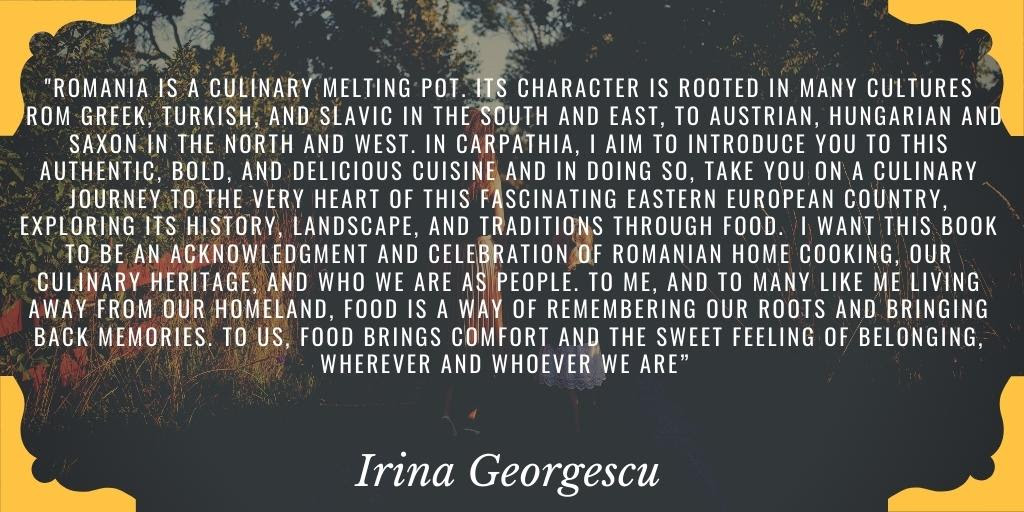
Interview by Otilia Baraboi.
O.B. The art of culinary writing is quite recent in Romania. What inspired you to become a food writer? Is this a career you would have chosen in Romania, or was it influenced by your new home in the UK?
I.G.Writing about Romanian cuisine and my family recipes was a 180 degree career change for me, one that was heavily influenced by my new home in the UK. Luckily, I am still able to put to good use the skills developed in my previous marketing career, working for multinational companies and NGOs in Romania. It’s just that now I am devising marketing strategies for myself and my book, and promoting Romanian values, which is far more exciting. Since I moved to the UK more than 10 years ago, I’ve seen what the mentality towards food is and how important it is for people to support their local producers and small businesses. Ethnic food, restaurants and cookery books are a way to popularise not only specific dishes, but cultural values too. People are ready to consume both when they sit down to eat a certain dish. I would say that they are willing to consume more history and contextual facts around a dish, than the dish itself. Things have gone beyond ‘locally sourced’ ingredients, and include ‘locally sourced’ facts from people that are actively part of the culture they write about. I think it is a wonderful way to get to know a country and its people, to perhaps challenge perception while serving a delicious meal. This is what got me going. Romania has a culturally rich cuisine and history and we need to tell people about it.
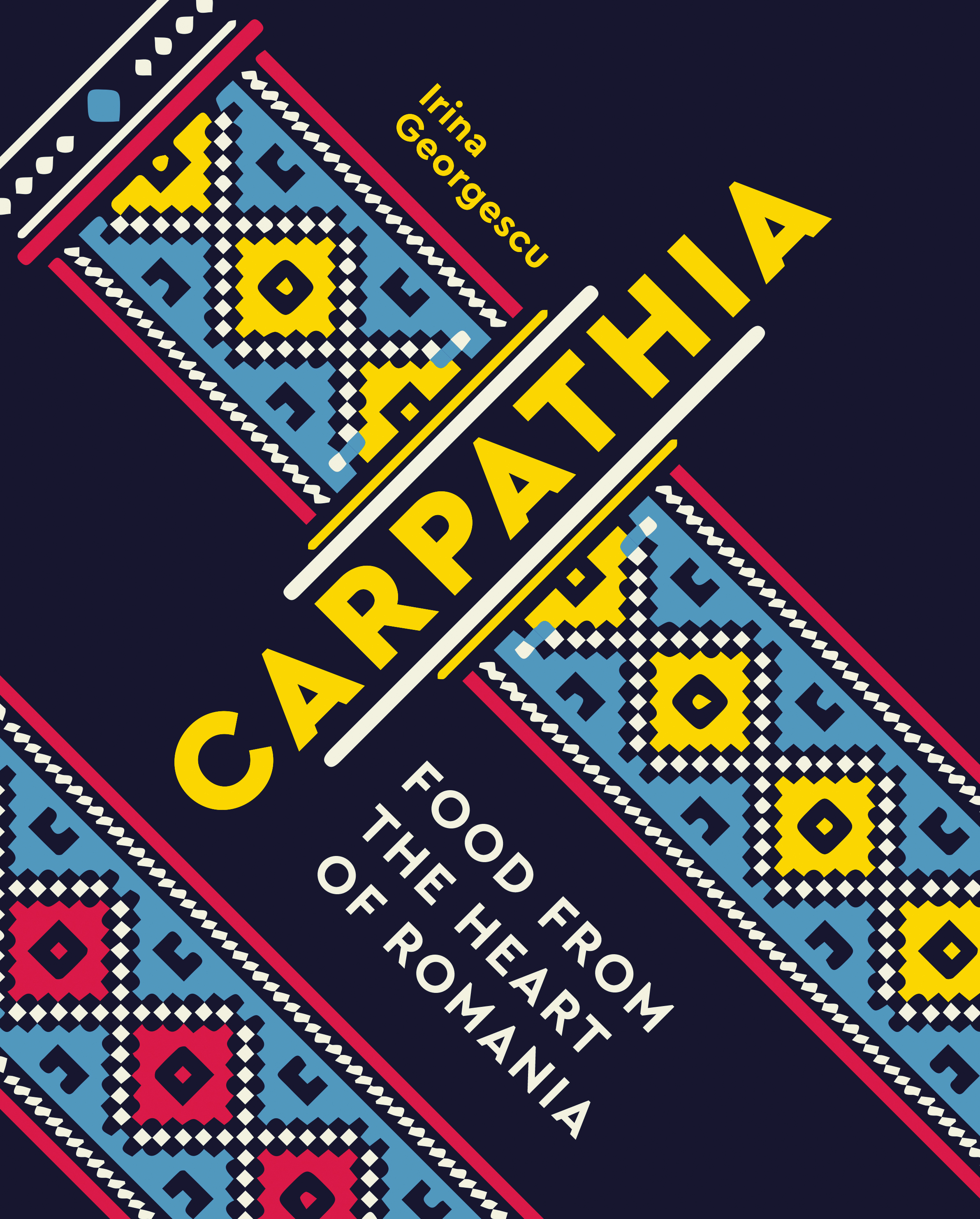
O.B. How was your book received in the UK, and in the US, despite the pandemic that must have affected your initial launch plans?
I.G. The pandemic has had a huge impact on the sales and promotion plans of the book, but I don’t want to complain. So many people are in a worse situation than this. I am lucky to have had a very good PR team in my publisher’s office in London and they adjusted quickly to the new market. Everything moved online, which suited me perfectly because I live in Wales, hundred of miles away from London, and I had the ideal scenario to be able to contact people through social media and by email, and talk about the book. My efforts at home were amplified by the PR results achieved in London. It doesn’t happen every day, or sadly to every author, to have 4 pages in National Geographic talking about the cuisine in the book. Or to have recipes and interviews in the BBC Good Food magazine, which goes to 9 million people. Or to be shortlisted in the Los Angeles Times and write for newspapers in New York. Despite all this, things got tough. With the social unrest, high unemployment levels and climate change disasters happening across the US, even Amazon de-prioritised the selling of books in favour of more needed goods. It’s an entire chain reaction but hopefully, come November-December, we will see better times.
O.B. Your book speaks a lot to the Romanian diaspora worldwide. Food is a universal language, just like music and the visual arts, it brings people together in an unmediated way, regardless of their origin. Did you have this audience in mind as well when you wrote Carpathia?
I.G.There was a lot to take into consideration when I wrote the book. I knew that there must be people like me, living abroad, missing Romanian dishes and finding comfort, and a sort of safe place in cooking traditional dishes. It wasn’t a deliberate thought to actually write for them, it was more of an organic development, it was first of all the way I felt. It became apparent that the book also talked to families who moved abroad generations ago, and it tapped into a pool of people with deeper emotional roots and connections to Romania’s cuisine and culture. I get a lot of messages like this and every single one gives me goosebumps. To my mind, the book is not written for Romanians in Romania. At home, we all know how to make sarmale. My first intention was to write for a public who doesn’t know anything about Romania, and wanted to learn more. My second intention was to challenge how Romanians were perceived in the UK and offer people an alternative message to what they could read or watch in the media. In a way, this helped on a personal level too, to find my place in my adoptive society and cemented the reasons to hold my head high when talking about Romanians. I wanted to tell the world about our beautiful Romanian traditional costumes, hand painted pottery, Oltenian kilims, UNESCO sites and family values through a set of recipes. I deliberately kept the recipes traditional, so if people visit Romania, they will be able to recognise them on the menus. It’s a bridge between a book and real life tourism that I hope can bring a lot of advantages to Romania.
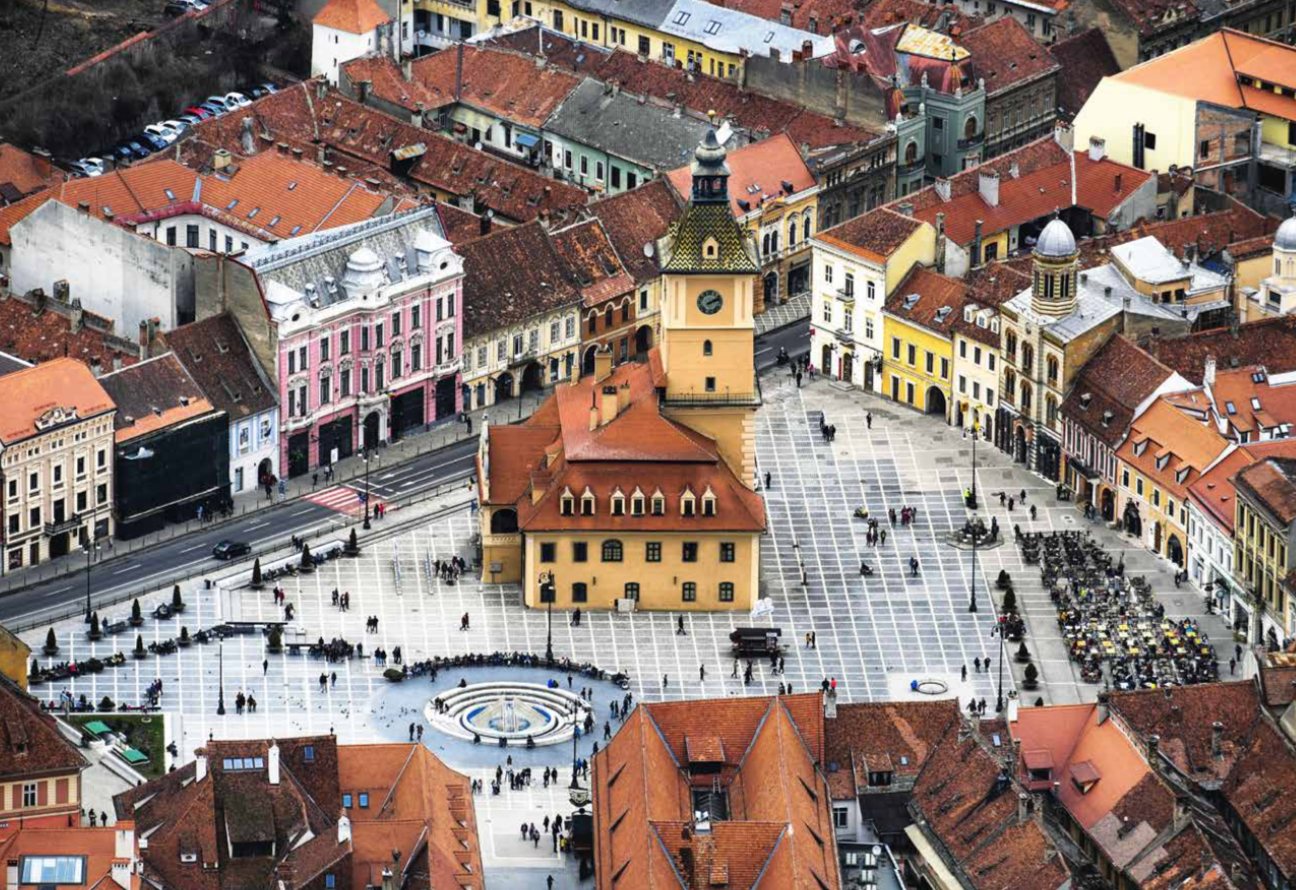
O.B. Can you tell us more about the title Carpathia, Food from the Heart of Romania? What or where is Romania’s heart and how does it relate to its food?
I.G. I think that Romania’s culinary heart is defined by the Carpathian mountains and by the landscape they shape and dominate. They define our historical regions and the microclimates for local produce. Where would our dairy artisans be without being able to herd their flocks and herds through the rich pastures up and down the mountains? And what about Mangalitsa and Bazna pigs in Transylvania, bred for delicious lardo and charcuterie which wouldn’t have been possible without the Austro-Hungarian dominance of this part of Romania. The Carpathian mountains kept at bay three major cultures and political powers right here on Romania’s territory: Ottomans (with their synthesis of Arabic, Middle Eastern and Greek cultures), Hapsburg (with their Germanic and also Hungarian cultures) and Russia (with its Slavic, Central Asian cultures). Migration and trade routes crossing the mountains contributed to the establishment of so many diverse communities: Armenian, Jewish, Macedonian, Serbian, Bulgarian and so on. This is the heart of Romanian cuisine and one way or another, it beats in the Carpathian mountains.
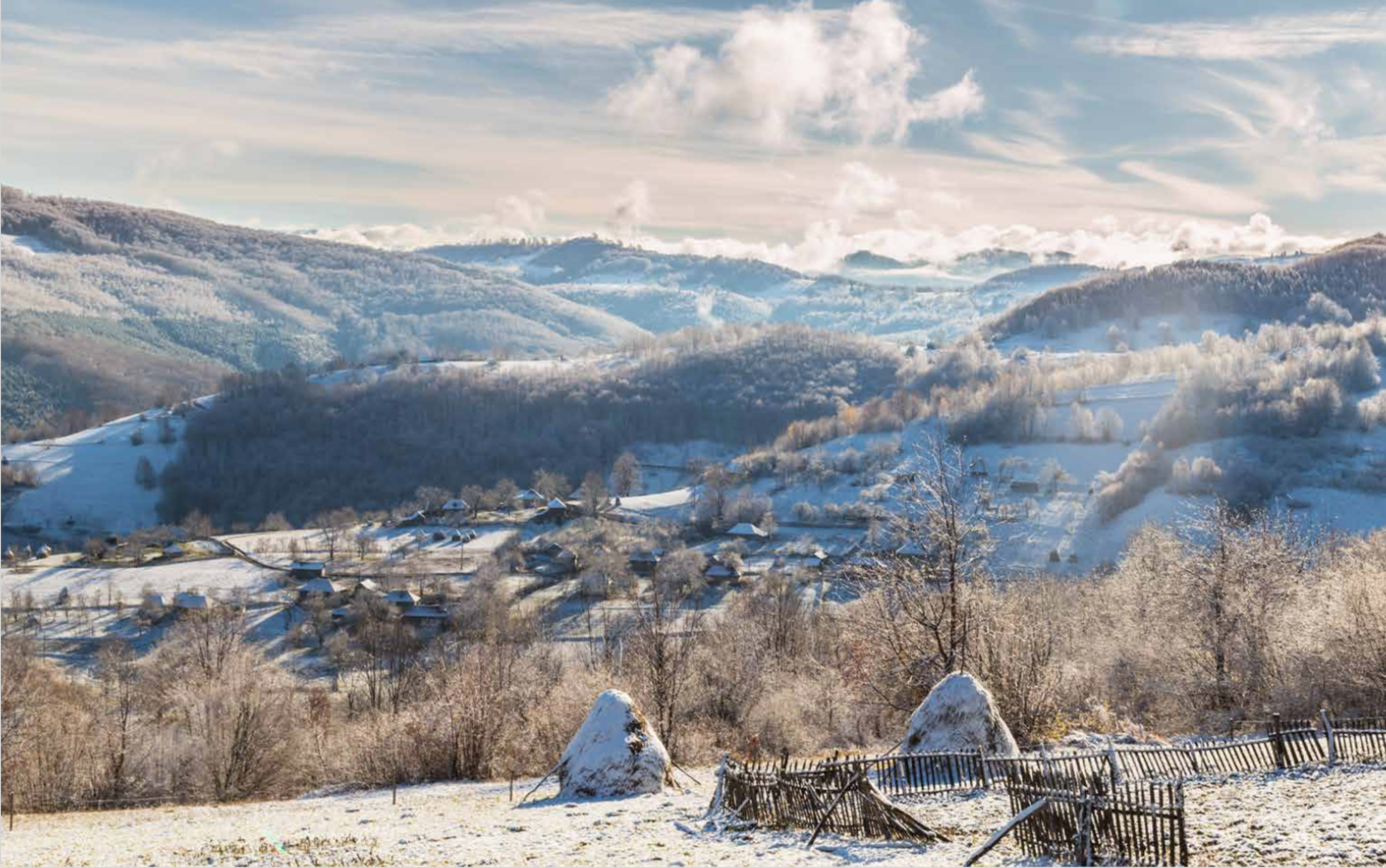
O.B. What makes the Romanian cuisine unique despite the many influences it distills in the recipes you included in your book?
I.G. I often say that Romania’s uniqueness lies in the diversity and resourcefulness of its cuisine. There are some intriguing elements. Anyone flicking through the book will notice the number of dishes that use cornmeal, from breakfast to dessert, through starters and main courses, polenta is simmered, shaped, layered, stuffed or fried. An important element in our cookery is bors - this fermented ingredient that also gives the name to numerous broths, and not necessarily made with beetroot. Another thread in the story of our cuisine is the Ottoman influence and dishes that are actually cooked using pork. Our beloved pies, plăcinte, especially those rolled by hand and layered, without using filo pastry, are pretty much baked as in Roman times. In fact, this whole world of plăcinte, be it savoury or sweet, is incredibly varied and I don’t think that there are many countries with this wealth of recipes and variations. Even if I couldn’t include a recipe in the book for each type, I was at least able to talk about them and explain their part in our cuisine.
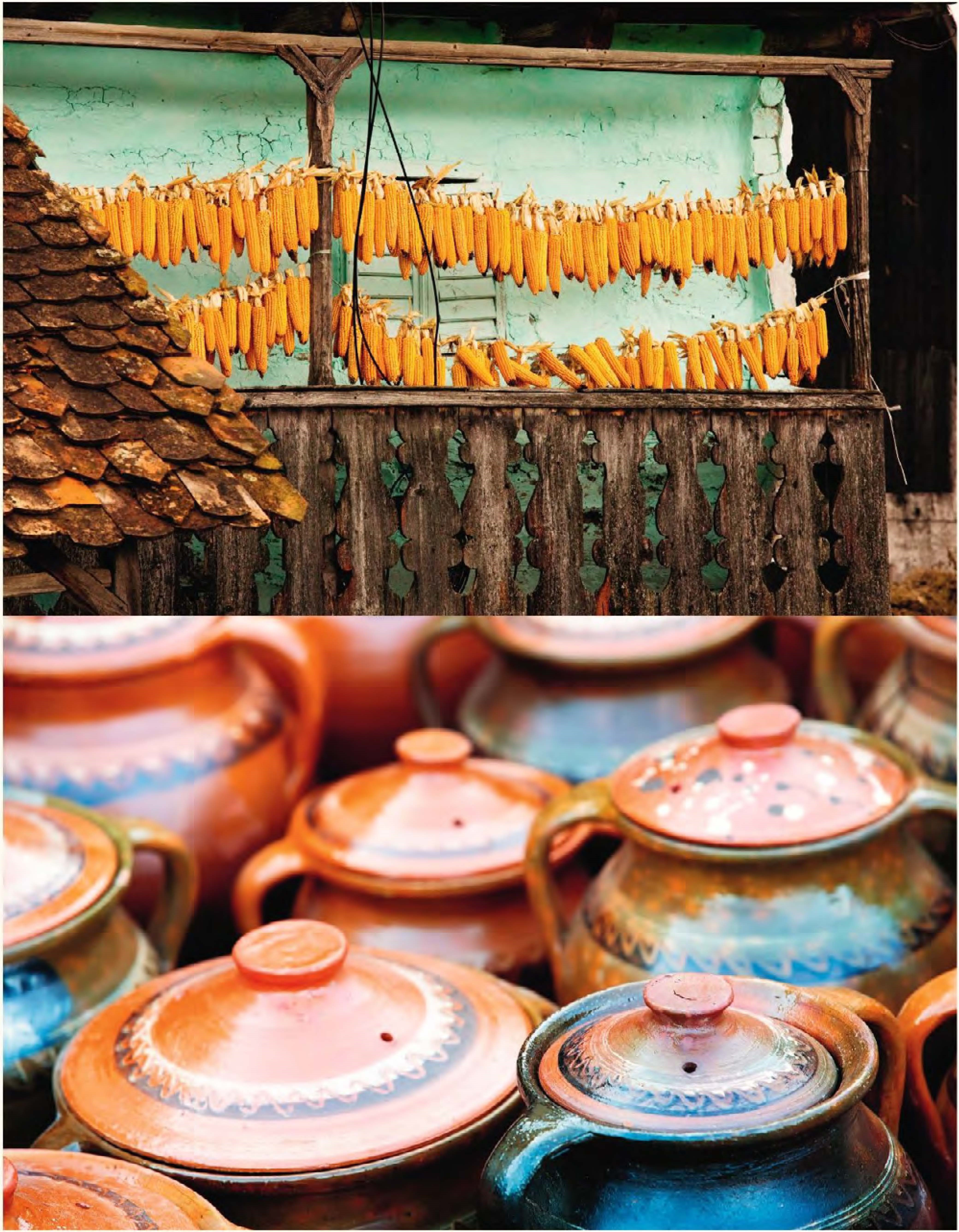
O.B. In your introduction you talk about your childhood growing up in Bucharest during communism. The scarcity of basic foods prompted your mother to improvise and be a real „wizard in the kitchen”. Can you think of three of her recipes that you loved as a child?
I.G. I think that her food was delicious mainly because of her cooking method, very often dishes were started on the stove and finished in the oven. I do this in the book quite often. Slow cooking was also something that suited her busy schedule, because while the food was cooking, she was able to do other tasks around the house. We didn’t waste any food, any leftovers went into something else, such as left over mashed potatoes mixed with freshly cooked polenta. The green tomatoes, gogonele, that didn’t make it into jars to be pickled, were turned into jam. Or any left over dough from baking cozonac, our Christmas or Easter bread, was rolled like a flat bread, topped with left over filling and baked for a delicious snack.
O.B. Can you explain how did your parents’ “work ethic”, especially your mother’s “culinary ingenuity” shaped your values in life?
I.G. The basic and simple idea that one needs to work hard to achieve something shaped my life. I write in the book at some point that dad didn’t accept the saying ‘she did her best’ or ‘that was her best effort’ if my efforts were not fully using my potential. So I grew up in this environment where I had to understand what it meant to stay committed to doing something, to persevere and try harder. In Romania, children were and still are pushed to overachieve all the time, and I wasn’t an exception. So as a grown up, I had to channel this energy towards something that was important and relevant to me, as a person, and to my life. And that something was writing this book. I couldn’t have done it without the delightful years spent as an ‘apprentice’ to my mum, helping her in the kitchen, going shopping for ingredients together, judging the freshness of the produce, checking the dishes for seasoning and flavour, deciding if they were ready or needed a bit longer in the oven. I was there mainly just to be around her, but I learned a lot about cooking by doing that, and also about being organised, always having a plan B if something went wrong, and staying in control in the kitchen. So I knew I had all the skills I needed to write this book.
O.B. I love how your book is structured around the cycles of nature and seasonal recipes paired with beautiful pictures of landscapes with changing colors, from different regions of the country. The four seasons inform indeed the creative adaptability of the Romanian cuisine. What special recipes from the book do you like to cook in the fall?
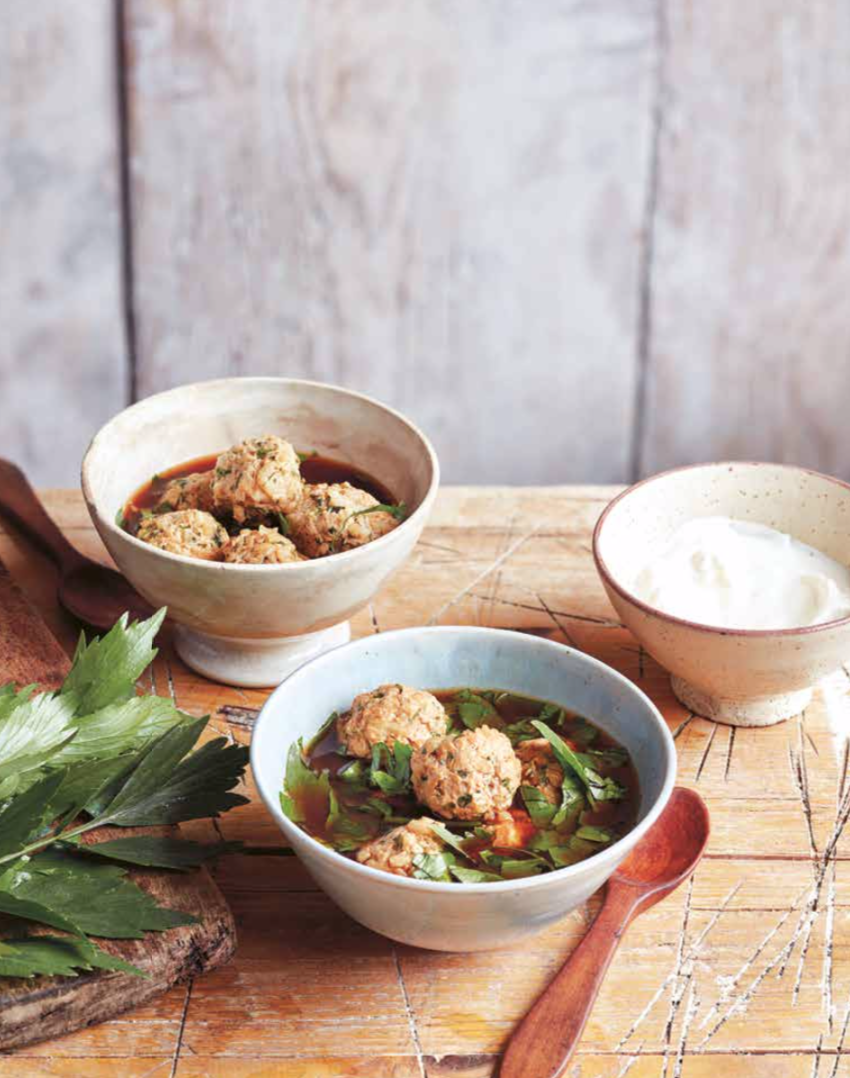
I.G. I like so many dishes that I can’t possibly pick just one. Fall is perfect for those comforting, rich Romanian dishes such as smoked ham hock with butterbeans or bors with smoked sausages or meatballs (ciorbă de perișoare). Sauerkraut and caraway seed broth with potatoes is another of my comfort foods, and also the vegetarian gherkin stew served with polenta is absolutely delicious. Of course, I am always looking forward to sarmale, stuffed sauerkraut leaves, in December. If I find quince at the market, I always make jam in October-November or compotes - there is nothing as soothing and light as a warm compote after dinner on a chilly evening.
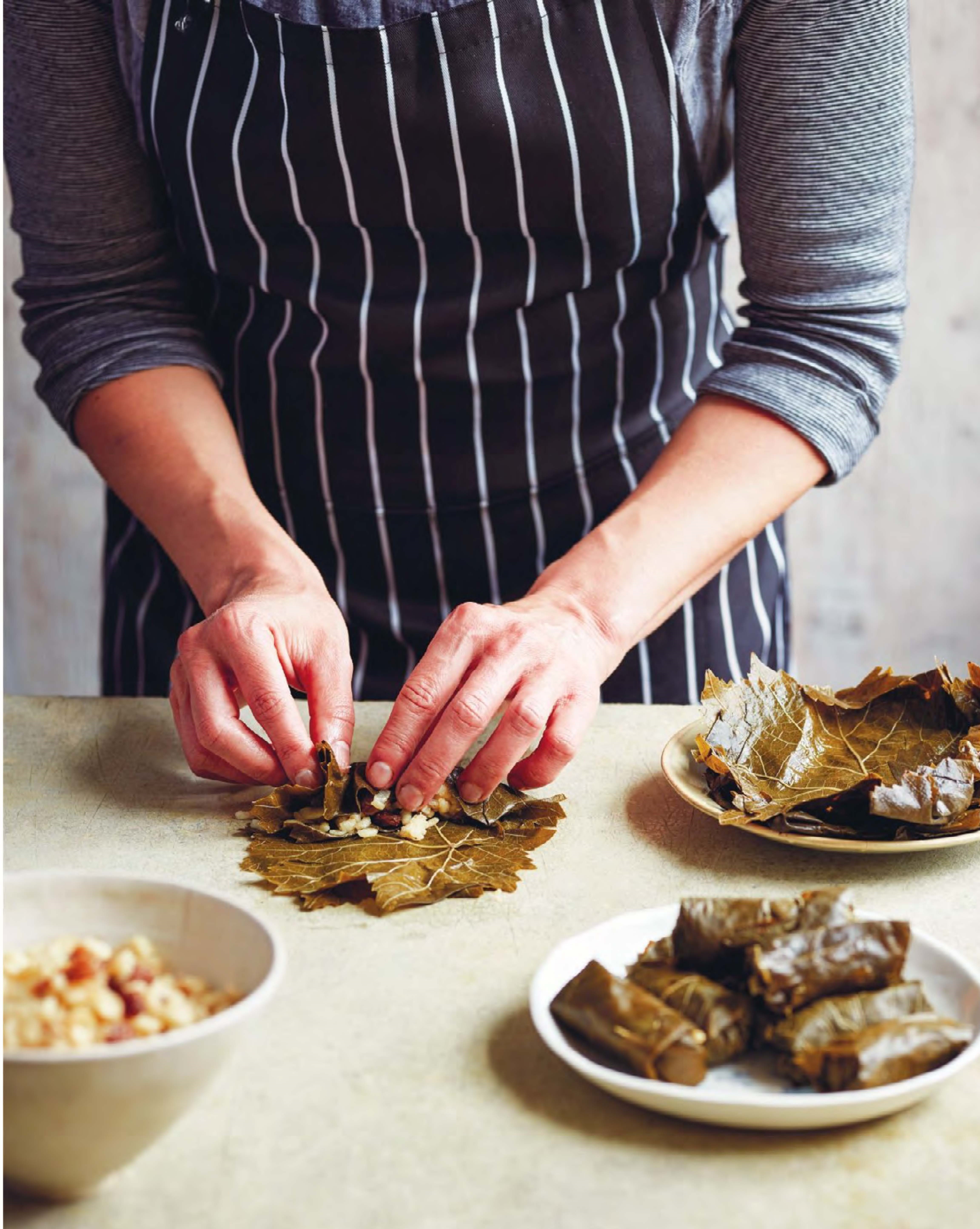
O.B. Similar to other East European countries, Romania has an ancestral tradition of fermented and pickled foods that you included in your book. Besides its health benefits, can you share why is this practice dear to your family, and to many Romanians who keep it going?
I.G. It is a good question, with all the fresh produce in the shops regardless of the seasons, why do we still want to preserve food? ‘Because it is what people do in the autumn’- I can hear many of us saying. Home made pickles and preserves are tastier if mum made them for us, or if we made them for our family. It’s the satisfaction of eating something made by ourselves, following a family recipe, that we learned from our parents and helped them prepare so many times before. I think this is why we do it. It’s traditional.
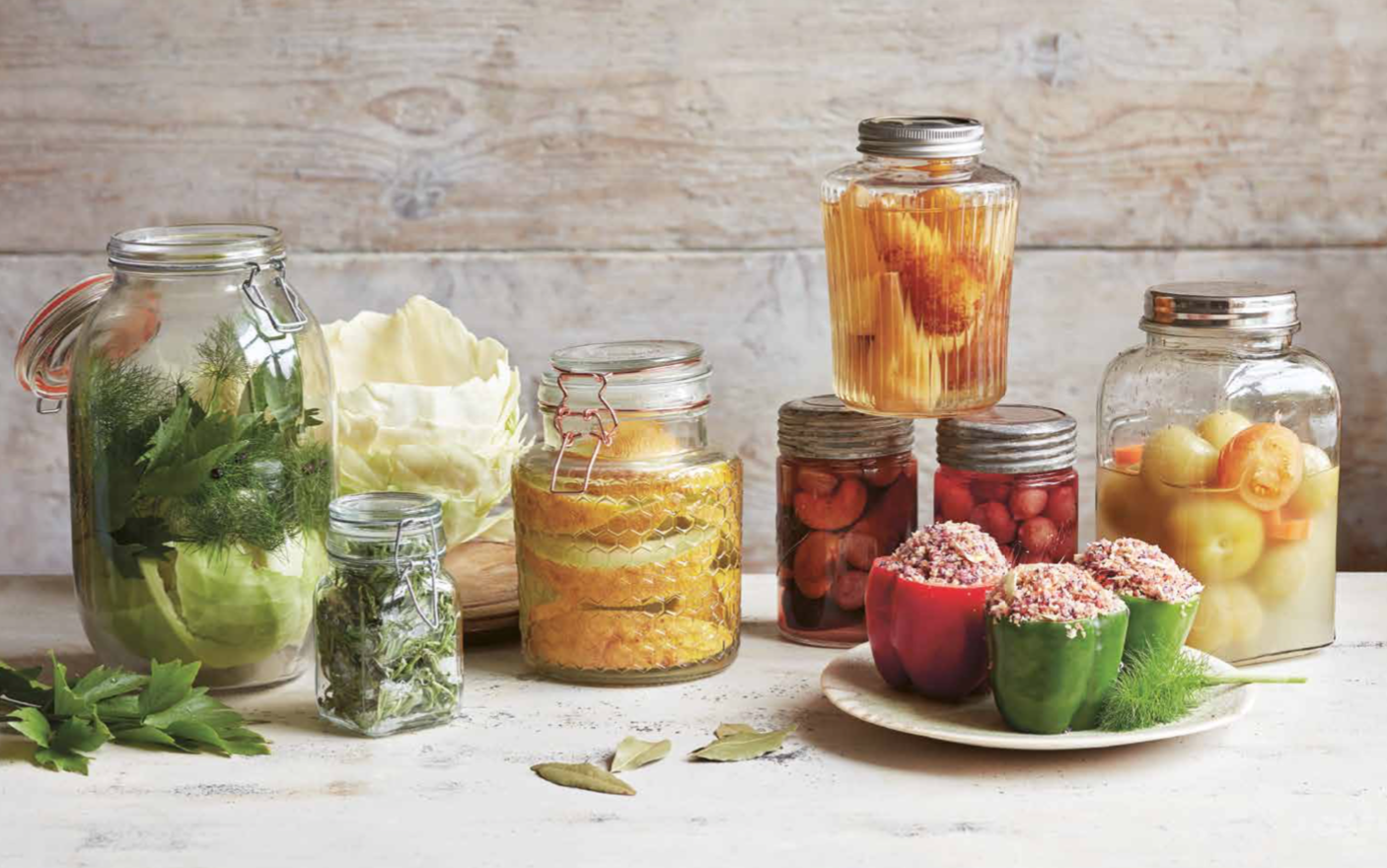
O.B. What has been your Romanian comfort food during these difficult times of home isolation due to the pandemic?
I.G. I live in rural Wales, so isolation is a lifestyle choice - haha. As a food writer, I always need to test recipes, send e-newsletters and promote the book, so I have been cooking and baking a lot, recipes that I was able to share on social media. I’ve found myself cooking and baking more and more with cornmeal, polenta, whether for a comforting breakfast or lunch. It was a good thing especially during the massive panic-buying that happened at some point. All the flour was sold out but plenty of cornmeal was left on the shelves. Lucky me.
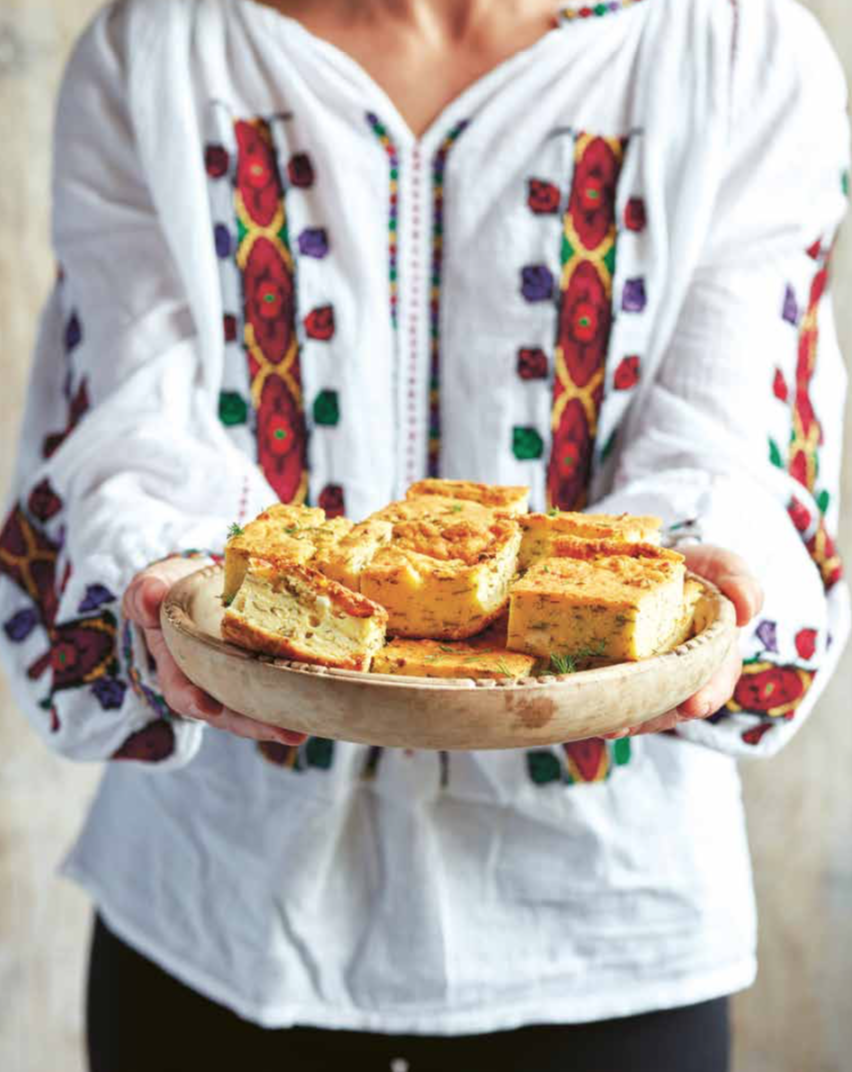
O.B. What are your future plans and projects?
I.G. Quite a few but travelling has made them more difficult to progress. They are all related to Romania and our cookery, since this is what I want to do in the next few years. I am also looking to start gourmet groups to take to Romania, where I can be their food-guide. I would also love to be able to include wine tours and talk about Romanian wine. At the same time, I need to come to the US to meet and cook for people who have been buying the book and supporting me on social media.
Pictures by Jamie Orlando Smith Photography:
1. Irina Georgescu
2. Carpathia (book cover)
3. Brașov City
4. Romanian Winter
5. Romanian Pottery
6. Ciorbă de Perișoare/Meatballs Borș with Lovage
7. Sărmăluțe/Stuffed Grape Leaves
7. Alivenci /Moldovan Polenta Cakes with Cheese and Dill
